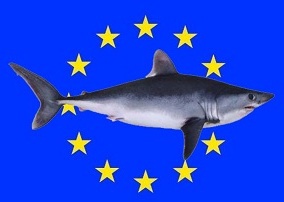Fishing drives the loss of shark and ray populations in the Adriatic Sea
 News Release
News Release
Joint Research Centre
The European Commission’s in-house science service
10. January 2013
—————————
According to a JRC co-authored article published today in Nature Scientific Reports, the shark and ray communities in the Adriatic Sea have been highly depleted in recent years, with fishing being a key driver of the decline.
The study combined and standardised catch data from five trawl surveys conducted between 1948 and 2005 to evaluate long-term trends in the Adriatic Sea elasmobranch (a subclasses of cartilaginous fish) populations, which counted 33 different species (12 shark species, 20 rays and one chimaera). Since 1948, catch rates of these populations have declined by 94% and 11 species have ceased to be detected. Shark and rays are important components of the marine ecosystem and their loss can severly impact food web dynamics.
The abundance of these species can decline considerably with fishing, but assessing the drivers of community changes can be complicated due to interactions between species and variations in vulnerability and exposure to fishing. An observational approach across gradients of natural or human-induced changes is an efficient alternative. The Adriatic Sea offered an ideal case study due to its long history of human-induced changes and the differences between the eastern Italian coast, exposed to extremely high exploitation pressure and the Croatian coast, which sustained a much lighter fishing exploitation.
The article reports a greater abundance and diversity of elasmobranchs in the eastern Adriatic, reflecting the less intense historical and recent fishing pressure in Croatian compared to Italian waters. Results show that the exploitation history and changes in fishing pressures could explain most of the observed patterns of abundance and diversity, including the absence of strong compensatory increases.
The study highlights the importance of examining historical data for understanding long-term dynamics of marine species and supporting current decisions. It also suggests that careful planning and international management of developing fisheries in the Adriatic and the creation of ecological corridors and large-scale protected areas could help to promote recovery of shark and ray communities. The findings are also of major relevance to recent EU policy and legislation initiatives on the conservation and management of sharks.
Related scientific paper :
Francesco Ferretti et al. 2013
Long-term change in a meso-predator community in response to prolonged and heterogeneous human impact
Nature Scientific Reports 3, Article number: 1057, doi:10.1038/srep01057
Source: European Commission

What a surprise !!!
Just ask sucuba divers that has been around for the last 20 years.
They will tell you how all Adriatic Sea is emtied.
Rays are gone, Sharks are gone even the Tuna is about to go forever…
Until the politicians will decide what to do, it will be over..
Many farmers in Kansas have ponds on their properties that they fish for fun or for food. They catch catfish, bass or bluegills. Damn near everyone of them have to stock their ponds. If they don’t there won’t be any fish left. We can’t stock sharks. I wouldn’t ever suggest that as an answer but it goes to the whole principle of basic math. What is the answer to reverse this course? Are we so dumb that we see it coming and still let it happen?